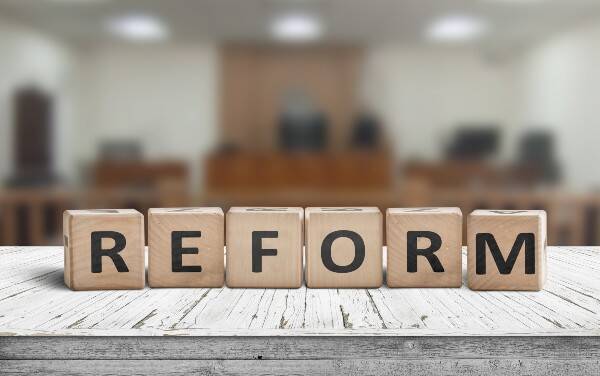Adoption Reform

re·form
/rəˈfôrm/
Make changes in (something, typically a social, political, or economic institution or practice) in order to improve it.
What is Child-Centered Care?
Trauma-informed care (TIC) is defined by the National Child Traumatic Stress Network as medical care in which all parties involved assess, recognize and respond to the effects of traumatic stress on children, caregivers and healthcare providers. In the clinical setting, TIC includes the prevention, identification and assessment of trauma, response to trauma and recovery from trauma as a focus of all services.
The resources below, including resources from the AAP Pediatric Approach to Trauma, Treatment, and Resilience (PATTeR) project, provide information and guidance on implementing TIC in pediatric settings.
What does Child-Centered Care Look Like?

Alternatives to Adoption
Adoptees are often asked if we'd rather kids stay in foster care forever rather than them find homes to care for them. This is such an unintelligent question that lacks all critical thinking.
So what are the alternatives to adoption, and why are they important?
Kinship care is commonly defined as "the full-time care, nurturing, and protection of a child by relatives, members of their Tribe or clan, godparents, stepparents, or other adults who have a family relationship to a child." The relationship should be respected on the basis of the family's cultural values and emotional ties. There are many benefits to placing children with relatives or other kinship caregivers, such as increased stability and safety as well as the ability to maintain family connections and cultural traditions.
This is ultimately the most ideal circumstance for placement of a child if their biological parents are unable or unwilling to provide care. This keeps children in their biological family system in some way, and offers genetic mirrors, medical history, and family connections that are vital to the well-being of a child.
Fictive kinship care refers to placing children within their community, clan, or tribe in some way. This helps maintain relationships with family members, religion, culture, heritage, and history. Refer to legal permanent guardianship for more information.
Legal guardianship is a judicially created relationship between a child and responsible adult in which
the guardian assumes many of the rights and responsibilities that customarily would reside with the child’s parents. Traditionally, a guardian has been a person, usually a relative or close family friend,
who has been named by the parent in his or her will to assume the care of the child after the parent’s death or permanent disability. In addition to parental arrangements for guardianship, a court may appoint a guardian for a minor if the parent is unable or unwilling to provide appropriate care for his or her child or parental rights have been terminated.
A court also may appoint a relative or other kin as a permanent guardian when that person has been caring for the child as a foster parent. Kinship guardianship can be a permanency option for
a child in the legal custody of a department of
social services when reunification with the child’s parents or permanency through adoption is not feasible. Guardianship creates a legal relationship between a child and caregiver that is intended to
be permanent and self-sustaining and can provide a permanent family for the child without the necessity of terminating parental rights.
Sources:
https://www.childwelfare.gov/topics/outofhome/kinship/about/#:~:text=Kinship%20care%20is%20commonly%20defined,family's%20cultural%20values%20and%20emotional
Why are these Alternatives Better?
The way adoption in the United States is done it's strips a child in crisis of their basic birthright. This birthright includes: the right to preserve the child's identity, nationality, name, and family relations. Adoption in the United States removes all of that for the child. In adoption the child's birth certificate is then sealed away from them for up to 99 years in most states. Only 14 states currently have laws in place allowing adoptee's to have access to view their original birth certificate. Keep in mind the original birth certificates are deemed null and void. Often times even our Social Security number is replaced. A new birth certificate is then issued out removing the child's birth parents and replacing them with their adopted parents. A birth record should never be changed for any child. Adoptive parents should not be put on a birth certificate as a record of live birth, that they did not take part in.
Furthermore, adoption in the United States also severs all ties to the child's biological family including siblings, as well as all medical history. Adoptees have died because they do not have a proper access to their family medical history. For example, if an adopted child has a genetic condition and testing needs to be done insurance companies can and do deny that testing, because you cannot prove legally this child has any biological family with the same genetic condition.
Children do not need to be legally adopted and stripped of their birthright for a family, whether biological or stranger to care for them. Legal permanent guardianship offers all the same rights to enroll a child in school, your medical insurance, and for them to be included in your family without stripping them of their biological family ties. Last names can be changed legally if needed without severing birthrights.
Children cannot legally give informed consent to being put into a legally binding contract for life-to which there is no form of annulment for the child. Children in crisis will always need a safe place to land, but that does not mean that their rights need to be forever taken from them to get that safe place. Children should be allowed to grow and develop within whatever family is currently capable of caring for them and be able to make an adoption decision when they are of legal consenting age to agree to be adopted and have a full understanding that they are losing their biological ties.
Adoption in the United States also breaks 15/30 rights of a child set-forth by the UN.
For more information about birthrights via the United Nations

